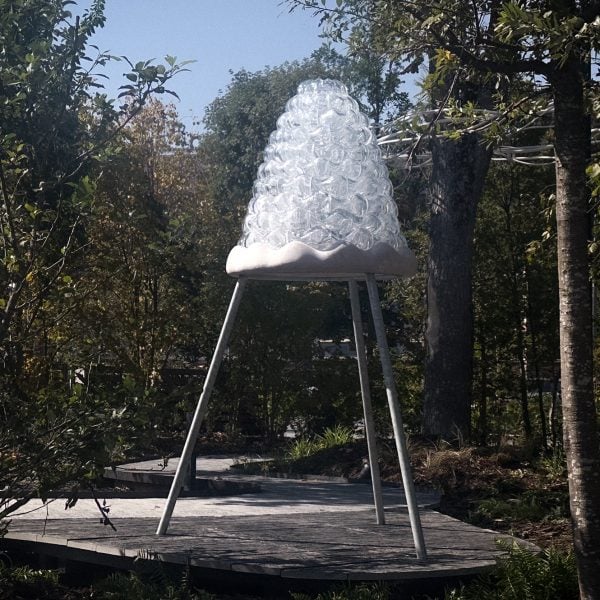Hollow glass blocks assembled similarly to a self-supporting stone arch make up the Serpentine Bell, a sculpture by Palestinian architects AAU Anastas and Japanese sound artist Tomoko Sauvage.
The glass installation was commissioned by Champagne house Ruinart and sits in the sculpture garden of the company’s headquarters in Reims in the north of France.
The work combines a structure of interlocking glass bricks made by AAU Anastas directors Yousef Anastas and Elias Anastas with a soundscape created by Sauvage incorporating recordings of water and bubbles.
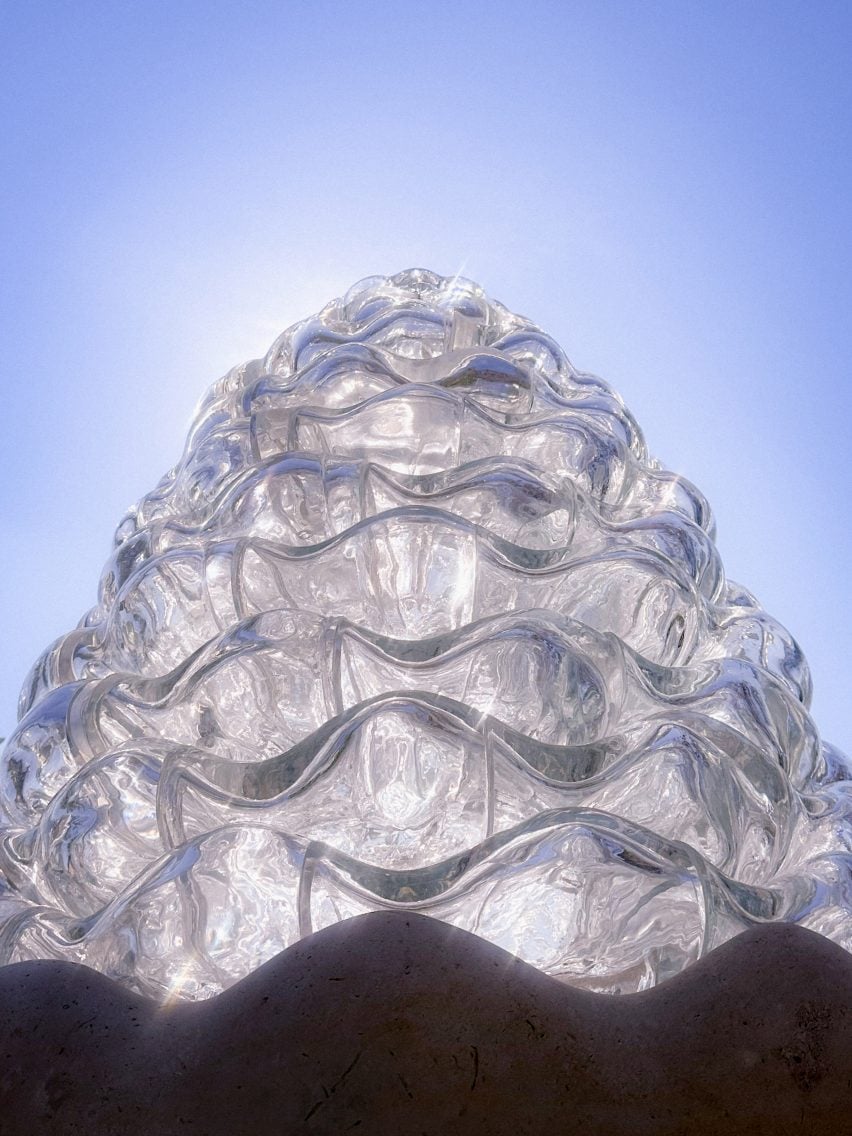
The glass bricks are assembled using techniques borrowed from stereotomy, which is the practice of cutting stone or wood into particular shapes to build complex structures. It is one of the focuses of the architects’ ongoing research project, Stone Matters.
The Anastases and Sauvage intended the Serpentine Bell to explore the meeting point of their material experimentations and to reflect on the value of collaboration.
“Tomoko’s work with water, bubbles, sound and bowls speaks about an environment that is ephemeral, immaculate, subtle and practically elusive,” said AAU Anastas.
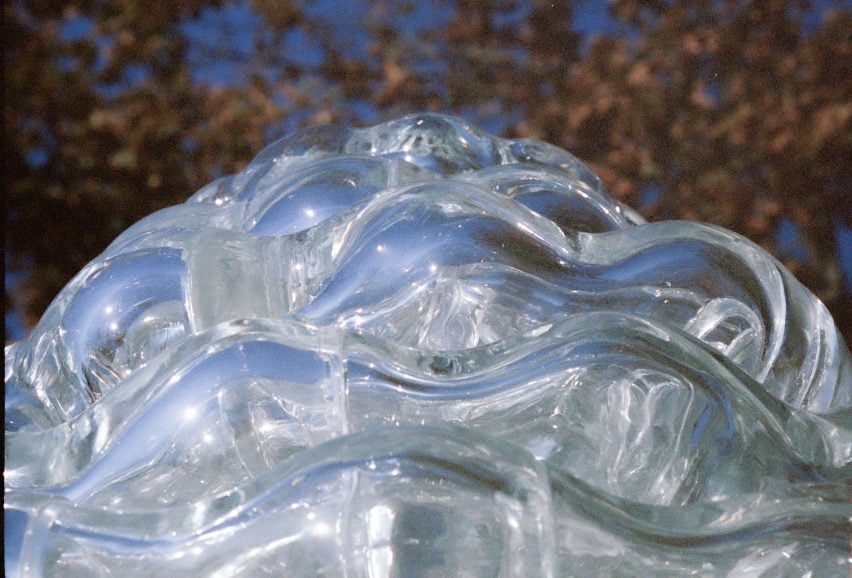
“Stone construction could be associated with permanence and heaviness,” said the architects. “Yet, the point where both our practices meet is probably the delicacy of working with materials.”
“Whether sonic material, stone or glass, the installation speaks about the knowhows, the history of techniques from very different places, backgrounds and contexts to form a global solidarity network of knowledge.”
The Anastases and Sauvage met in Palestine when the architects invited the artist to perform at the opening of their creative hub, the Wonder Cabinet, in Bethlehem in the West Bank.
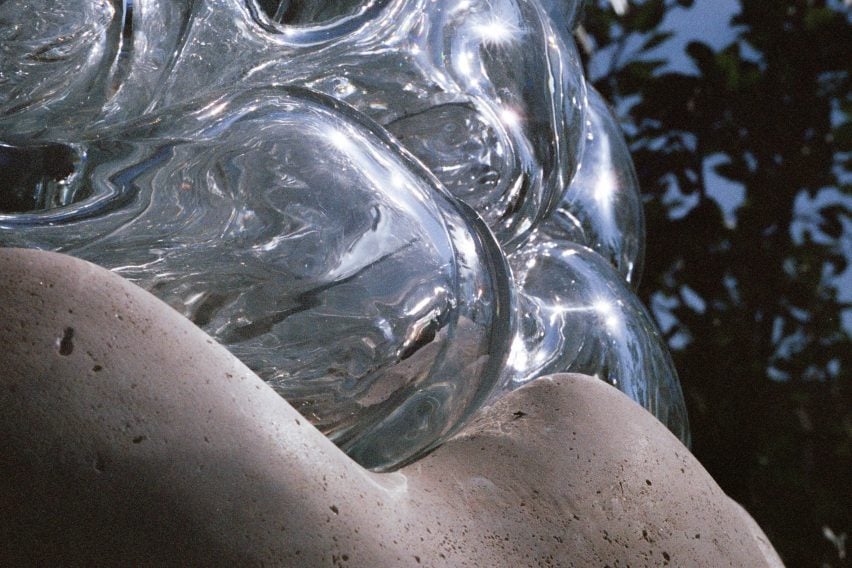
The Anastas brothers have a history of thinking about sound as part of their architectural practice and even operate a radio station, Radio Alhara, out of the Wonder Cabinet.
For the Serpentine Bell, their structure had to provide a setting to listen to Sauvage’s composition, which features the sound of water rushing through the natural chalk walls of Ruinart’s cellars, amplified via hydrophone.
Visitors stand under the cone-shaped structure, positioned about shoulder height from the floor, to feel immersed in the sound while staring out at a world distorted through the thick glass modules.
There are 103 of these modules, almost all of them with a doubly curved shape that allows them to nestle on top of each other and build the progressively arching bell shape.
This shape also contributes to the lateral strength of the structure, helping to resist horizontal forces such as wind or shaking.
Just like if it were a stereotomic work made of stone, the Serpentine Bell is self-supporting. A silicone sealant was used to hold the blocks together during mounting and subsequently removed.
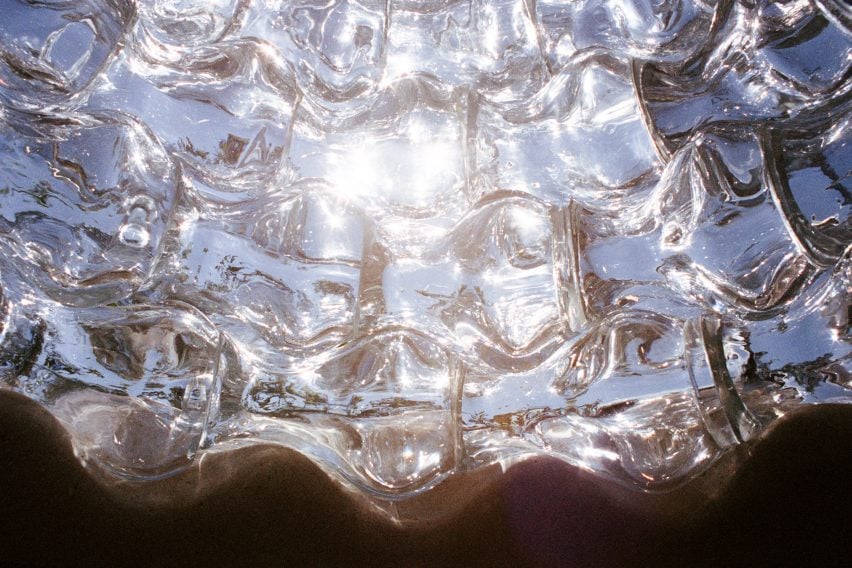
This is because the glass fabrication process, in which the temperature of the glass drops quickly, produces natural variations that make construction more difficult than it would be with stone.
Elias Anastas told Dezeen that he was interested in blown glass as a load-bearing material in architecture.
“Glass can be used essentially in three forms: panels, cast and blown,” he said. “Blown glass seemed very interesting to us because it’s much cheaper than cast glass and allows for three-dimensional explorations when compared to panels.”
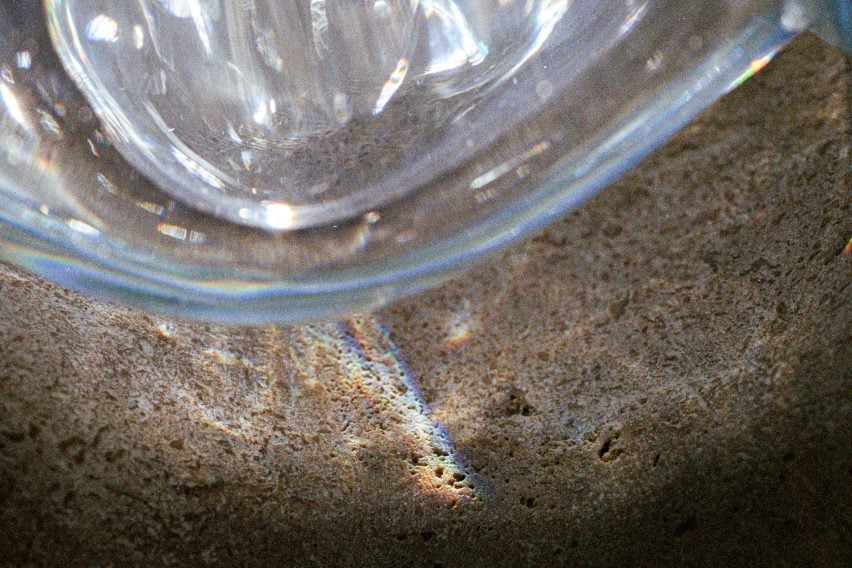
“Physically, glass is very strong in compression but it is brittle,” he added. “In that sense, it resembles the global behaviours of stone.”
“While glass seems very light, it is actually as dense as stone or concrete: a one-metre cube of glass is as heavy as a metre cube of stone. Yet it is completely transparent.”
The glass blocks were hand-blown at the Arcam Glass atelier in Nantes, using moulds that had been cast around precise 3D-printed models with 10 variations in size and shape. The thickness of their walls varies between 1.5 to three centimetres.
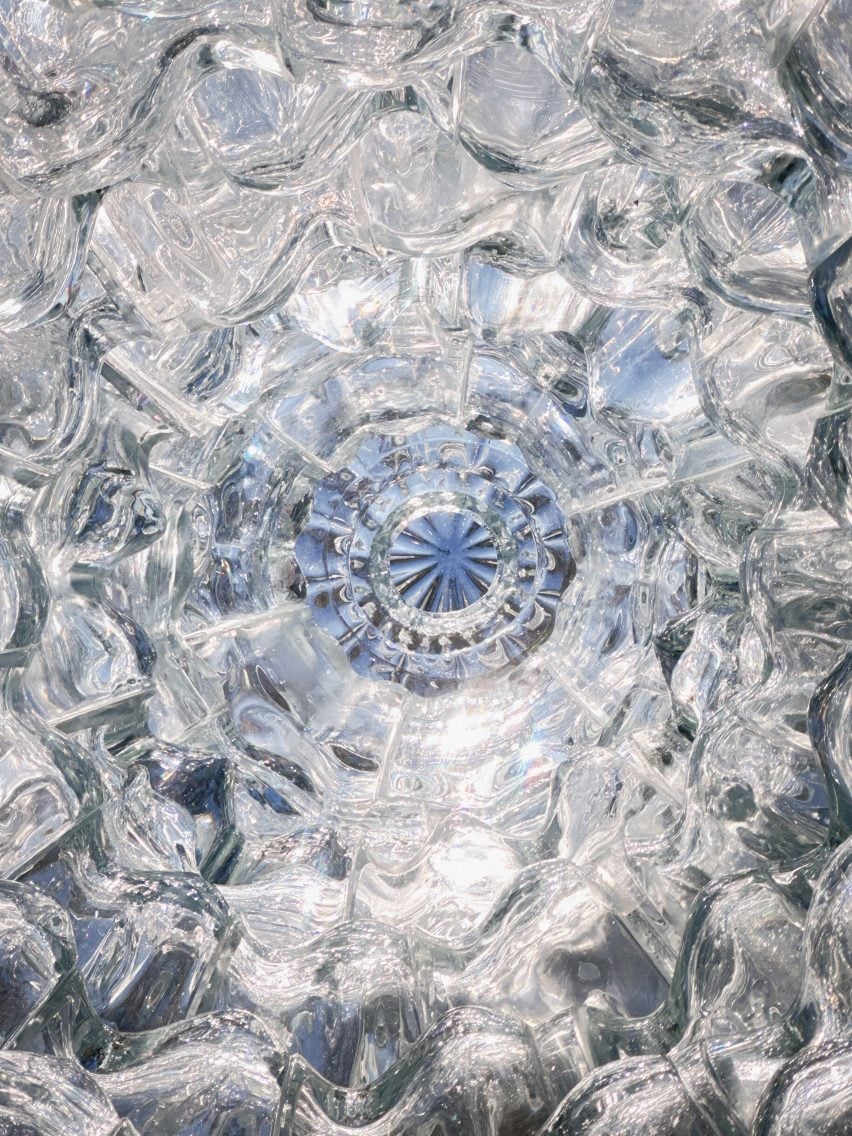
As in many of their works, the Anastas brothers sought to preserve knowledge from Palestine and deepen understanding of its history through the Serpentine Bell.
“Palestine is a meeting point of the accumulated knowledge of civilisations,” said AAU Anastas. “Its rich and perpetuating history of material explorations in the field of glass and stone is the basis for this collaboration.”
“Paradoxically, in view of the intentional isolation imposed by occupation forces in Palestine, it is the extreme richness of knowhows of techniques anchored in Palestinian artisanship that allowed Elias and Yousef and Tomoko to meet and contribute further to a global solidarity network.”
AAU Anastas has previously shown installations related to their Stone Matters project at the Venice Architecture Biennale and at the V&A during the London Design Festival.

